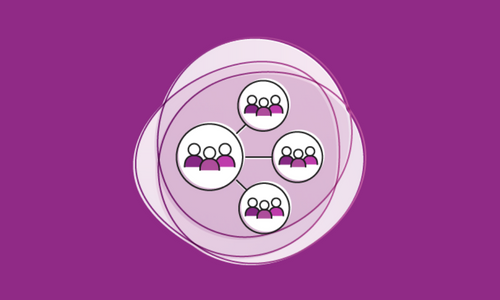What are social norms and why do they matter for adolescents?

The Learning Collaborative to Advance Normative Change is a network of experts committed to facilitating collaboration between organizations and individuals working on adolescent and youth norms-shifting interventions. Members are working collectively to build knowledge and tools to promote and guide effective social norm theory, measurement, and practice. To this end, we have developed a series of blogs to clarify some of the key concepts in social norms work. Here, we start by tackling: What are social norms and why do they matter for adolescents?
Social norms are unwritten rules of behavior shared by members of a given group or society. Examples from western culture include: forming a line at store counters, saying ‘bless you’ when someone sneezes, or holding the door to someone entering a building right after you. People might do those things, even when they personally think they are silly, because they want to play by the rules.
Social norms theory is diversified. Even though there are differences across disciplines in the way that social norms are defined, in global health, working definitions of social norms often draw on the work of social psychologist Cialdini. Cialdini and his colleagues defined norms as people’s beliefs about:
- What others do in a given situation (descriptive norms); and
- The extent to which others approve or disapprove of a given action (injunctive norms).
Social norms have been (and are) extremely important to the survival of our species. Homo Sapiens’ capacity to coordinate pro-social behaviors with a large number of non-family members is unmatched in the animal kingdom. Evolutionary moral psychologists argued that social norms are the cornerstone of that coordination capacity. Expectations that the group will ostracize anti-social members (i.e., those who break shared rules of pro-social behavior) ensure that everyone works for the greater good.
But social norms can result in harmful outcomes. Foot binding in China, wearing constricting corsets and dueling in Europe in the 18th and 19th centuries, respectively, or female genital cutting in West Africa are examples of harmful practices that were or are sustained by social norms. Examples that affect adolescent girls and boys include norms that: “students who smoke or drink are cool,” “girls who carry a condom are easy,” or “a real man hits his wife if she disrespects him.”
So why do people comply with social norms? Researchers have identified several reasons, including:
- Social sanctions. People are concerned about being punished if they don’t comply with some norms or about getting rewarded if they do comply with others.
- Group membership. People want to be identified as a member of the group (be it large or small, real or imagined) that follows these rules.
- Some norms begin being transmitted as part of children’s early education. These norms are then so deep-seated, that people follow them without even realizing they are doing so.
- Those in power can sometimes use policies and laws to enforce norms that maintain the status quo.
Social norms can be an impediment to collective behavior change. Even though group members might personally prefer not to follow the norm, they may still comply, believing that they must meet other’s expectations. If no one ever deviates from the norm (or if only a few do so), it could remain in place over time – even if it is harmful, or if most members of the group don’t like it personally. Often, people who don’t want to comply with the norm do so until they realize that most others don’t want to comply either.
Fortunately, social norms do shift over time. Think, for instance, about the shifting of norms around drunk driving, child marriage, or female genital cutting in several countries. Many committed individuals and organizations around the world are working together with communities to foster social expectations which lead to healthy, productive lives.
To learn more, check out the following resources and stay tuned for our next blog:
What is a norms-shifting intervention? And why does that matter for its scale up?
- Learning Collaborative Overview Brief
- LC Social Norms Background Reader
- Top 20 Resources on Social Norms
- BMGF Seattle Social Norms Convening: Meeting Report
Ben Cislaghi, PhD, is an Assistant Professor in Social Norms at the London School of Hygiene and Tropical Medicine (Centre for Gender, Health and Violence), where he coordinates a learning initiative on social norms and gender-based violence. He is interested in how community-based responses can achieve change in social norms and has worked for and collaborates with various NGOs to integrate social norms into their interventions and measurement.
If you are not yet part of the Collaborative and would like to join, please sign up here!
 Where We Work
Where We Work  Press Room
Press Room  FACT Project
FACT Project  Passages Project
Passages Project  Learning Collaborative
Learning Collaborative  Search All Resources
Search All Resources  Social Norms
Social Norms  Fertility Awareness Methods
Fertility Awareness Methods